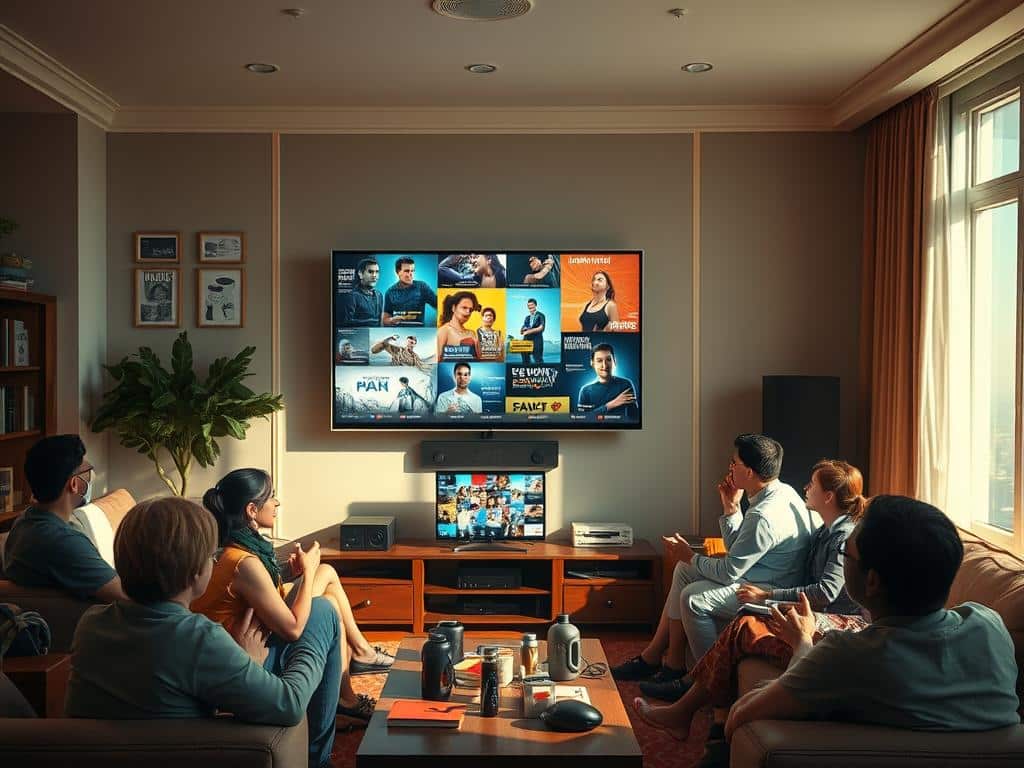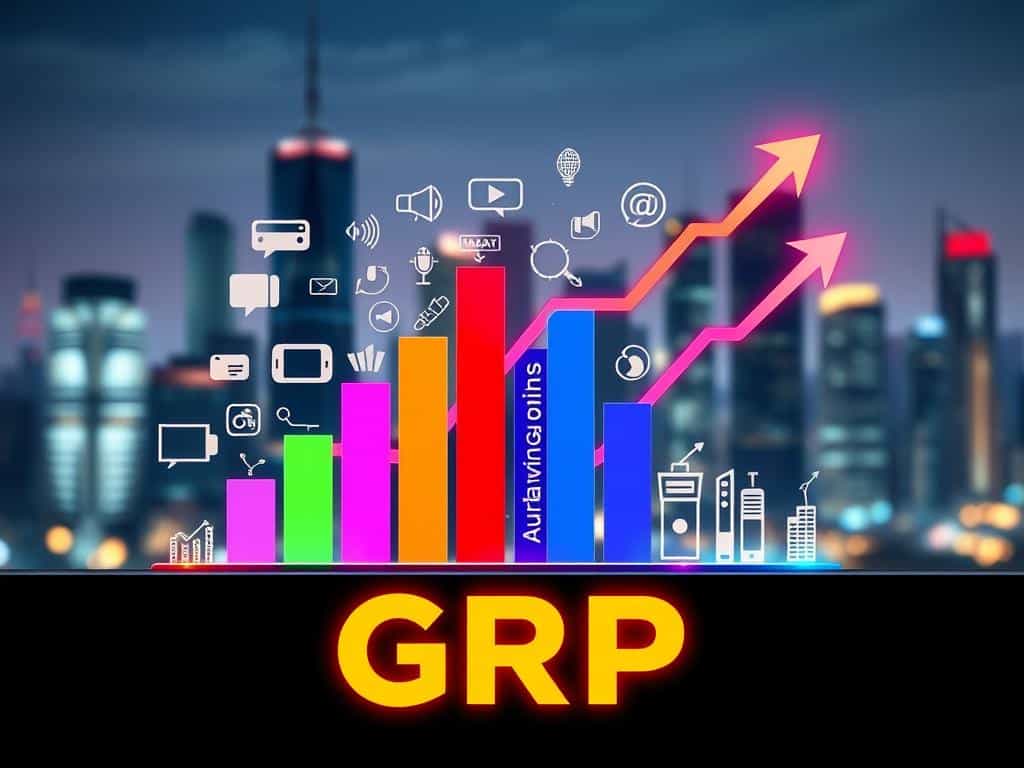In the realm of TV advertising, pinpointing an effective balance between reach and frequency is crucial to boosting your campaign success. Achieving substantial TV advertising effectiveness typically involves delivering your message to a significant portion of your target audience while managing costs efficiently. The initial reach tends to be relatively cost-effective, but each additional percentage point of reach comes with a higher price.
For instance, reaching the first 10% of your target audience may cost between $10,000-20,000 per point, whereas extending that reach to 50% of the audience could escalate costs to around $300,000-500,000 per point. Therefore, a good strategy revolves around balancing reach and frequency to ensure optimal advertising frequency and maximum impact.
Moreover, conventional TV may offer more cost-effective options depending on your audience demographics and viewing habits. Keeping these TV campaign benchmarks in mind, you can fine-tune your strategy to achieve a good reach and frequency that drives conversions.
Understanding TV Advertising Reach and Frequency
In the dynamic landscape of TV advertising, understanding the concepts of reach and frequency is paramount for optimizing media buy efficiency. These metrics help advertisers effectively penetrate their consumer target and maximize TV viewer impressions. Both reach and frequency play integral roles in the success of a TV advertising campaign, driving brand recognition and consumer action.
Definition of Reach in TV Advertising
Reach in TV advertising refers to the number of unique viewers who see a particular television advertisement at least once during a specific period. It is calculated as a percentage of the total potential audience. This percentage is derived by dividing the number of unique viewers who have seen the ad at least once by the total number of potential viewers, then multiplying by 100. Various methodologies and tools like people meters, set meters, and diary methods are utilized to measure and track reach accurately, offering a clear picture of audience penetration.
Definition of Frequency in TV Advertising
Frequency in TV advertising measures how many times your target audience sees your ad within a given period. It’s expressed in terms of impressions per time ratio, such as 8 impressions on a single user within 24 hours. Frequent exposure can enhance brand recall and consumer engagement, but finding the right balance is key to avoiding ad fatigue. For instance, studies highlight that exposure to digital advertising a median of 7 times significantly boosts brand lift, illustrating the importance of thoughtful frequency strategies.
Impact of Reach and Frequency on Consumer Conversion
Reach and frequency collectively influence consumer conversion rates. Higher reach ensures that more unique viewers are exposed to the advertisement, broadening the potential market. On the other hand, optimal frequency reinforces the advertising message, fostering brand recall and intent to purchase. While reach tends to have a more substantial impact on initial consumer behavior leading to conversions, balanced frequency ensures sustained engagement. The ultimate goal is to harmonize these metrics to enhance media buy efficiency, ensuring every dollar spent contributes to higher consumer target penetration and maximized TV viewer impressions.
Factors Influencing Good Reach and Frequency
Achieving an effective balance between reach and frequency in advertising campaigns requires a thorough understanding of various factors. Primary considerations include the target audience characteristics, the budget allocated, and specific campaign strategies tailored to media planning efficiency.
Target Audience Considerations
Determining the optimal reach and frequency starts with a keen insight into your target audience. Various demographics may need different exposure rates to achieve the desired impact. For example, introducing a new product often prioritizes reach to build initial awareness. However, increasing frequency can be crucial for promoting brand recognition in a competitive market space. This audience targeting strategy helps in reaching segments effectively without causing ad fatigue.
Effective reach is crucial as it combines standard reach and frequency metrics to assess the percentage of individuals exposed enough times to take notice. Utilizing data modeling, GPS tracking data, and digital statistics ensures that your message connects meaningfully with your audience. According to a recent study, advertisers should consider unique variables of each campaign to determine the best reach and frequency balance.
Optimal Balance Between Reach and Frequency
Striking the right balance between reach and frequency is essential. While minimal frequency may fail to make an impression, excessive repetition could lead to ad wear-out, diminishing returns, and increased advertising cost management. Typically, effective frequency is achieved with three or more exposures, especially critical for brand recognition and trust. Monitoring click-through rates (CTR), conversion rates, and cost per conversion via key performance indicators (KPIs) can guide adjustments for optimal results.

For example, a meta-analysis of 863 campaigns revealed that creative quality, reach, and brand ranking significantly impact sales contributions. Traditional media often follows a frequency rule of three exposures, while digital platforms suggest around seven exposures. This variance underscores the necessity for continuous testing and learning to optimize media planning efficiency and audience targeting strategy.
Cost Considerations and Strategies
Managing advertising costs is pivotal in campaign planning. Expanding reach incurs higher costs, especially targeting wide audience segments. Therefore, advertisers can employ strategies like varying networks and programming to maximize exposure while controlling expenses. Additionally, analyzing the cost-effective mix of linear TV and connected TV (CTV) allows for budget distribution, achieving effective reach without burdening specific audience segments.
Using a frequency cap, such as limiting ad exposure to three to five times per week, can prevent audience ad fatigue and optimize ad effectiveness. This practice helps in maintaining an equilibrium between media planning efficiency and advertising cost management.
Strategies to Achieve Optimal Reach and Frequency
Achieving optimal reach and frequency in TV advertising requires a multifaceted approach that balances innovative techniques and strategic planning.
Testing and Learning to Maximize Campaigns
One effective method is A/B testing in advertising. This involves experimenting with different combinations of creative content and media placements, then scaling up successful components. By continually testing and adjusting factors like timing, frequency rates, platforms, and creative versions, you can enhance campaign effectiveness. This dynamic approach is crucial for fine-tuning your multimedia advertising strategy.
Utilizing a Variety of Networks and Timeframes
To maximize your reach, leveraging a mix of network choices and varying timeframes can expose your campaign to new audiences. Distributing ads over longer periods can prevent oversaturation and reduce ad fatigue. This diverse approach ensures you’re optimizing resources without drastically increasing costs.
Importance of Diversifying Between Linear TV and CTV
Splitting your advertising spend between linear TV and CTV is essential to capture different audience segments. The CTV advertising benefits include refined targeting and real-time data insights, which can be particularly advantageous for reaching the 95 million+ CTV households in the U.S. Incorporating platforms like Innovid and InnovidXP for unified measurement allows you to maintain accurate reach and frequency control, aligning with your campaign’s objectives.

What Is A Good Reach And Frequency With TV Advertising
Achieving the ideal reach and frequency in TV advertising takes careful consideration of various factors. These factors shape the effectiveness of your campaign. Understanding common benchmarks and guidelines, along with industry examples and ways to evaluate campaign effectiveness, can help in optimizing your overall strategy.
Common Benchmarks and Guidelines
Identifying good reach and frequency levels begins with understanding basic TV advertising metrics. Reach represents the total number of unique users exposed to your ad, while frequency is the number of times your ad is shown to each individual.
- Impressions: The total number of times your ad is displayed or viewed.
- Effective Reach: The percentage of your target audience exposed to your ad with enough frequency to drive action.
- Effective Frequency: Showing your ad multiple times to enhance brand recall.
- High reach for well-established brands to maintain broad exposure.
- High frequency for targeted sales messages to enhance recall.
In industries with longer purchase cycles, such as car sales, prioritizing reach is crucial for capturing a wide audience and aiming for top-of-mind awareness.
Industry Examples and Case Studies
Several brands have found success by tailoring their strategies to meet specific reach and frequency goals. For instance, Connected TV (CTV) advertising allows better control over unique reach and frequency levels, as seen in the rise of average CTV campaign reach. Consumer Packaged Goods (CPG) brands might opt for higher reach to ensure their products are seen by a large audience. On the other hand, Home & Garden brands might focus on higher frequency to foster brand retention among a niche audience.
Local restaurants benefit from high frequency due to customers’ spontaneous decision-making, while businesses with limited-time offers may prioritize frequency to capture immediate interest.
Evaluating Campaign Effectiveness
Measuring the success of your TV advertising campaign involves various metrics:
- CPMs (Cost Per Thousand Impressions): Indicates how much you’re spending per thousand views.
- Direct Response Metrics: Includes click-through rates and conversion rates to gauge immediate audience actions.
Adapting these metrics helps in assessing your campaign performance measurement and determining your advertising return on investment. Continuous evaluation and optimization based on real-time data ensure that you achieve a balanced mix of reach and frequency suited for your campaign objectives.
How Does High Spending on TV Advertising Impact Reach and Frequency?
High spending on TV advertising significantly boosts reach and frequency, allowing brands to connect with larger audiences repeatedly. By placing ads during peak time slots, most tv advertising achieves higher visibility, cementing brand recall and engagement among viewers. This investment amplifies exposure while delivering consistent messaging to target demographics effectively.
Conclusion
In conclusion, effective TV ad campaigns hinge on mastering the delicate balance of reach and frequency. By understanding the dynamics of these key elements, you can ensure your brand message resonates deeply with your audience, optimizes media strategy, and drives consumer conversion. As television remains a powerful platform, its capability to deliver emotion and create memorable connections underscores the importance of TV advertising.
Moreover, measuring KPIs such as website traffic, conversion rates, cost per acquisition, and social media engagement can help evaluate the success of your campaigns. Embracing the golden standard of Gross Rating Points (GRPs) provides a comprehensive impression score, combining both reach and frequency to maximize impact. The concept of a “frequency sweet spot” is vital, where the effectiveness of an advertisement peaks before audience fatigue sets in, necessitating the prudent use of frequency caps.
Looking forward, the future of TV advertising will demand adaptability to evolving viewing habits and technological advancements. As digital and Connected TV (CTV) platforms gain traction, refining your strategies to maintain efficient media spend becomes crucial. Adapting to the nuanced interaction between reach, frequency, and consumer behavior will be key for media strategy optimization and sustaining effective TV ad campaigns. By staying attuned to these changes, your efforts will continue to drive brand awareness and audience engagement in an ever-evolving advertising landscape.








